
All categories
Featured selections
Trade Assurance
Buyer Central
Help Center
Get the app
Become a supplier

(671 products available)
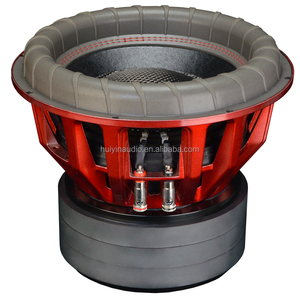
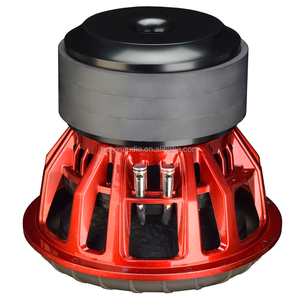
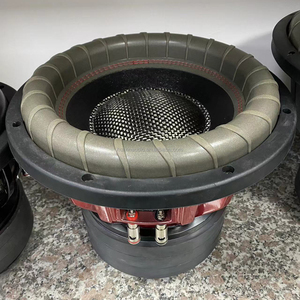
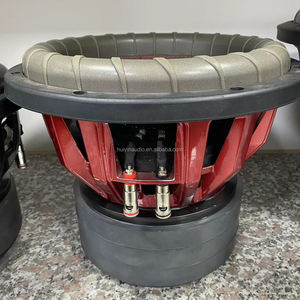
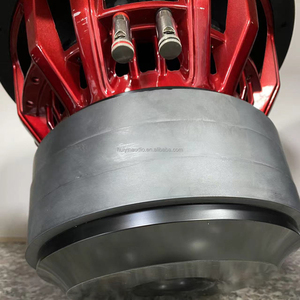













































A wiring dual voice coil subwoofer has one or two voice coils. Single voice coil subwoofers are quite common, but dual voice coil subwoofers are gaining popularity. Their main advantage is flexibility. For beginners, it may be difficult to wire a dual voice coil subwoofer. However, there are many resources online that can help with the installation. Below is a comprehensive guide on the types of dual voice coil subwoofers and their benefits.
4 Ohm Dual Voice Coil Subwoofer
A 4-ohm dual voice coil subwoofer comes with two 4-ohm coils, summing up to 2 ohms or 8 ohms. This gives users a lot of flexibility depending on the amp configuration.
Wire the coils in parallel to create a 2-ohm load or in series to create an 8-ohm load. This wiring flexibility allows users to match the subwoofer to their amplifier for optimal performance.
2 Ohm Dual Voice Coil Subwoofer
2-ohm subwoofers feature two 2-ohm voice coils, making them less flexible. They provide a 1-ohm or 4-ohm load. This means users have to wire the coils in parallel for a 1-ohm load or use them in series parallel for a 4-ohm load.
The 2-ohm dual voice coil subwoofer is ideal for those looking for a deep and louder bass response. It works well with most modern amplifiers.
1 Ohm Dual Voice Coil Subwoofer
A 1-ohm dual voice coil subwoofer is less common. It usually comes with two 1-ohm coils, providing a .5-ohm load. This type of subwoofer is ideal for high-powered amplifiers. It is suitable for hardcore bass enthusiasts.
The specifications of wiring dual voice coil subwoofers can vary depending on the model, but here are some common ones:
Power Handling
Subwoofers with dual voice coils typically have a higher power handling capacity than those with a single voice coil. Power handling is measured in watts and indicates how much power the sub can handle from the amplifier without distortion or damage. For example, a subwoofer might have a power handling rating of 600 watts RMS (continuous power) and 1200 watts peak (maximum power).
Impedance
Each voice coil in a dual subwoofer is wired separately, so the total impedance can be configured in different ways. Common impedance options are 2 ohms per coil (4 ohms total) or 1 ohm per coil (2 ohms total). Subwoofers with lower impedance produce more power but require a compatible amplifier.
Size
Wiring dual voice coil subwoofers come in various sizes, with larger ones typically producing deeper bass. Sizes are measured in inches, with common options being 8, 10, 12, 15, and 18 inches. For example, a 12-inch subwoofer may have a diameter of 12.2 inches and a depth of 6.8 inches.
Materials
The materials used in a dual 12-inch voice coil subwoofer can affect its performance and durability. Common materials for the cone (the part that moves the air) are polypropylene (a strong and lightweight plastic), paper (for a natural sound), and carbon fiber (for stiffness and strength). The surround (the part that connects the cone to the frame) is usually made of foam or rubber. The frame is typically made of stamped steel or cast aluminum.
Maintaining wiring dual voice coil subwoofers is important for optimal performance and longevity. Here are some tips:
1. Regular cleaning
Use a soft brush or cloth to remove dust and debris from the cone, surround, and basket. A vacuum with a brush attachment can also be used. Avoid using liquid cleaners that could damage the cone or surround.
2. Check connections
Periodically inspect the wiring connections between the voice coils and the amplifier to ensure they are secure. Loose connections can cause distortion or damage to the subwoofer. Make sure the terminal screws are tightened and the wires are properly stripped for good contact.
3. Avoid overpowering
Do not exceed the recommended power rating of the subwoofer. Overpowering can cause the cone to overheat or travel too far, leading to tears or displacement. Use an amplifier that matches the subwoofer's power handling capabilities and adjust the gain properly.
4. Avoid extreme temperatures
Keep the subwoofer away from sources of heat, such as vents or direct sunlight. High temperatures can damage the voice coils and affect performance. Similarly, avoid exposing the subwoofer to extreme cold, which can make materials more brittle.
5. Proper ventilation
Ensure there is adequate airflow around the subwoofer for cooling. Avoid obstructing the vent holes in the enclosure or mounting location. Poor ventilation can cause the voice coils to overheat and reduce lifespan.
Some of the factors to consider when choosing wiring dual voice coil subwoofers are as follows.
Power Handling
Subwoofer power handling is vital in selecting a suitable wiring dual voice coil subwoofer for a specific sound system. The subwoofer's RMS rating should match the amplifier's RMS rating to ensure a proper fit. If the amplifier's RMS rating is lower than the subwoofer's, it may lead to underpowering, which can cause sound distortion at high volumes. On the other hand, overpowering occurs when the amplifier's RMS rating exceeds that of the subwoofer. This may result in damage to the subwoofer due to overpowering.
Impedance
Consider subwoofer impedance when selecting a wiring dual voice coil subwoofer for a sound system. Subwoofer impedance plays a critical role in ensuring compatibility between the amplifier and the subwoofer. For most sound systems, an impedance of 2 or 4 ohms is ideal. This is because lower impedance results in increased power delivery from the amplifier to the subwoofer. It also leads to a more profound bass response. Nevertheless, 8-ohm subwoofers are suitable for specific applications where high impedance is needed.
Space and Enclosure
Space and enclosure considerations are critical in selecting a suitable wiring dual voice coil subwoofer for a specific sound system. Subwoofer size affects compatibility with the enclosure and available space within the vehicle or room. It also affects the subwoofer's performance and sound quality. Smaller subwoofers require less space for installation and are ideal for compact sound systems. Larger subwoofers are suitable for applications that require a more powerful bass response but need a more extensive enclosure and installation space. The enclosure design, whether sealed or ported, significantly impacts the subwoofer's sound performance and should be considered when selecting a subwoofer.
Sensitivity
Subwoofer sensitivity is a crucial factor in choosing a wiring dual voice coil subwoofer. Sensitivity determines the subwoofer's efficiency in converting amplifier power into sound. Higher sensitivity ratings mean the subwoofer requires less power from the amplifier to produce loud sounds. Lower sensitivity ratings indicate the need for more power from the amplifier to achieve the same sound levels. Typical sensitivity ratings for dual voice coil subwoofers range between 82dB to 95dB. Those with higher sensitivity ratings are suitable for use with low-powered amplifiers, while those with lower sensitivity ratings are ideal for use with high-powered amplifiers.
Replacing a wiring dual subwoofer can be a DIY-friendly activity. One of the most important things to do is to read the manual provided by the manufacturer. The manual will provide guidance on how to replace the wiring subwoofer safely and effectively. In the absence of the manual, here are some steps to follow.
Take note of the wiring configuration Dual Voice Coil Subwoofer before removal. It is important to do this since it will be used when installing the new subwoofer. Take a picture of it or make a diagram.
Disconnect the old subwoofer from the amplifier. After doing this, remove the screws holding the old subwoofer in place and carefully lift it out of the box.
Now it is time to install the new subwoofer. First, place the new subwoofer in the designated spot and secure it with screws. After doing this, reconnect the amplifier connections using the previously noted wiring configuration.
At this point, the replacement has been done successfully. Before closing everything up, ensure that the new subwoofer is working correctly. Test the system to make sure the new subwoofer is functioning properly. Once the user is satisfied with the outcome, disconnect the system and put everything back in place.
Q1: Can someone use a DVC subwoofer with any amplifier?
A1: In most cases, the DVC subwoofer's impedance rating must be compatible with the amplifier's impedance rating. This ensures that the amplifier can adequately power the subwoofer without overloading or underutilizing its capabilities.
Q2: Can wiring a DVC subwoofer to a lower impedance affect sound quality?
A2: Yes, wiring a DVC subwoofer to a lower impedance than what the amplifier is rated for can potentially affect sound quality and may damage the amplifier. It can cause the amplifier to work harder, leading to distortion and overheating.
Q3: Are dual voice coil subwoofers better than single voice coil subwoofers?
A3: It depends on the user's needs. DVC subwoofers offer more wiring flexibility and can provide a more efficient setup in some cases. However, single voice coil subwoofers are simpler and sufficient for many audio needs.
Q4: Can DVC subwoofers be used in home audio systems, or are they just for car audio?
A4: While DVC subwoofers are commonly used in car audio systems, they can also be used in home audio systems. Any sound system that requires deep bass and high output levels can benefit from a DVC subwoofer.
Q5: Do DVC subwoofers require a specialized amplifier?
A5: No, but it is crucial to ensure that the DVC subwoofer's impedance is compatible with the existing amplifier. Most amplifiers can work with DVC subwoofers, provided the wiring is done correctly.